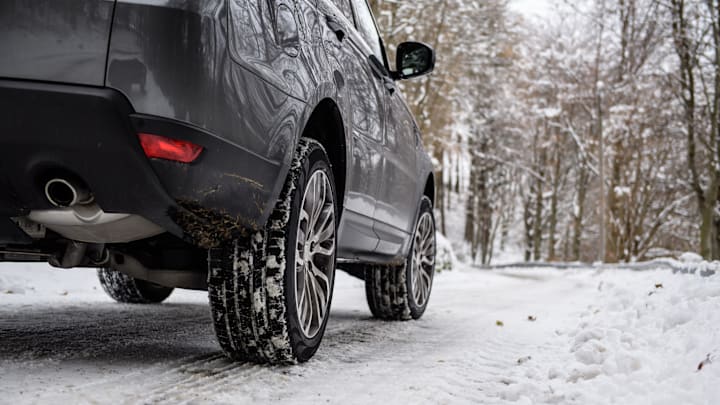Driving your car is great for getting from point A to point B, but it can get a little dangerous—especially during the winter season.
When temperatures drop below freezing, the moisture on roads turns into ice, and it can start to snow from above. These conditions can increase the risk of accidents—or just getting stuck on the side of the road or in the driveway. (It happens to the best of us.)
If you keep winter driving supplies—like flares, blankets, flashlights, jumper cables, and other cold weather gear—in your car’s trunk, you should be able to navigate an icy situation easily. Whether you want to gain some extra traction on snow and ice or just melt it, having rock salt, sand, or just basic cat litter can help immensely.
But is there actually a difference? And more specifically, is one better than the alternatives if you’re stuck in a snowbank? Let’s take a closer look at all three below.
Rock Salt
If you’re looking for a quick way to melt ice—especially over large areas like a driveway—then rock salt is probably the best option. It’s chemically formulated, usually with either sodium chloride or calcium chloride, to help deice roadways in low temperatures by lowering the freezing point of water, which can keep ice from forming.
Because sodium chloride is often the active ingredient, it’s similar to table salt in a sense, though rock salt crystals are usually much bigger. The substance can work wonders during a blizzard, but there are some big caveats. Rock salt usually adds to environmental pollution and can be corrosive on cars over time, as well as damaging to plants and grass. Not only that, but it can be toxic to animals, so it’s not ideal for all folks, especially those with pets at home.
Sand
Sand is a popular alternative to using rock salt on snowy roadways because it doesn’t typically cause the same kind of damage to cars, plants, or the environment overall (though it isn’t entirely eco-friendly, either). Sand also tends to stick around, so it’s great if you need your tires to have extra grip on snowy roads. You can also sprinkle it on paths or sidewalks that are already frozen over, and it should provide some much-needed extra traction.
But, on the downside, sand doesn’t melt snow or ice, so if you’re looking for a deicing agent, it won’t be of much assistance during any snowstorms. It’s also very messy and can be a hassle to clean, especially seeing as most experts recommend pre-wetting it before use, which can increase the chances that it’ll stick to your shoes and boots.
Kitty Litter
All out of sand but still need your tires to get a grip? Don’t worry—just go for some kitty litter. Though it might seem odd at first glance, kitty litter can come in handy if you’re trying to navigate paths that have been iced over.
Similar to sand, litter won’t melt ice. But because it’s made up of such granular bits—some cat litter types may be made of natural materials like corn, wheat, or pine, while others are made up of clays and/or silica gel—it can provide some much-needed traction for tires. Unlike rock salt, it’s also safe to use around pets.
That said, kitty litter can be just as annoying as sand to clean up. It absorbs moisture, turning snowy paths into sludge-like messes before long. If the winter weather falls below freezing, it also becomes less effective at soaking up moisture. But if all you need it for is some extra grip on your car tires, kitty litter can be a very worthwhile alternative.
Read More Stories About Winter Preparedness Below:
